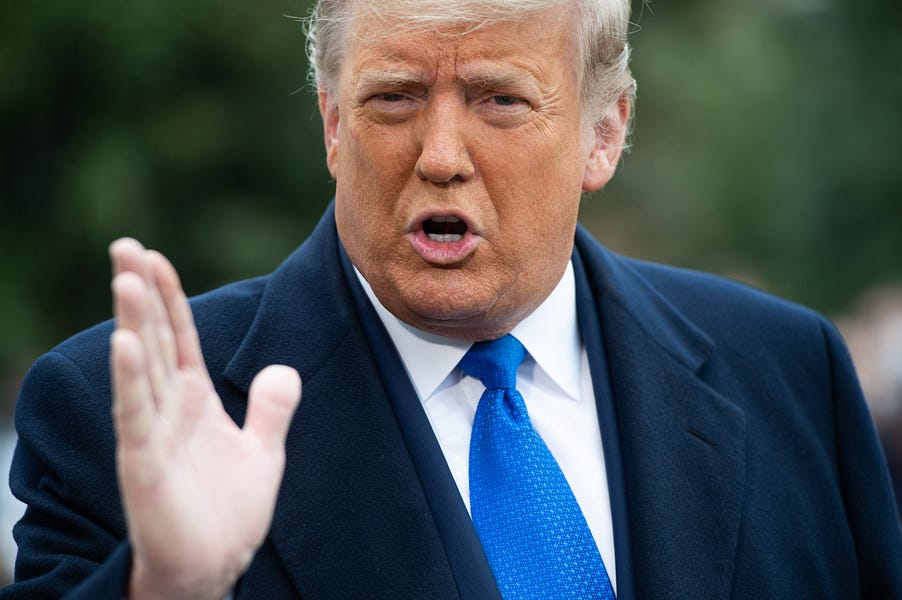Last Thursday, President Trump tweeted that Georgia was lax in its signature verification process of mail-in ballots, rejecting “almost zero ballots.” In years past, he claimed, that number was close to “4%.” Trump’s statement came one day before Georgia certified its election results, showing Joe Biden as the winner. Trump’s full claim reads as follows:
According to a press release from the Georgia secretary of state’s office, the rejection rate for absentee ballots in the November 2020 general election over signature issues was .15 percent, on par with the rate for Georgia’s 2018 election.
Out of 1,322,529 absentee ballots, there were 2,011 absentee ballots rejected in November 2020 because of signature issues. In the 2020 primary election, 3,266 ballots were rejected among a total of 1,151,371 absentee ballots, a rate of .28 percent.
“The lower rejection rate in the general election compared to the primary is likely the result of both parties attempting to help voters cure their absentee ballots pursuant to the process set forth in Georgia statute,” the secretary of state’s office said in a statement.
In a November 17 press conference, Gabriel Sterling, a voting system implementation manager in Georgia, said that the rejection rate for signature issues in the 2020 election was also consistent with the rejection percentage in the 2016 election.
This 4 percent rejection rate that Trump cites is misleading because it includes ballots that were rejected for arriving after the 7 p.m. Election Day deadline, and not because of signature issues.
“The biggest chunk of ballots are rejected or counted as rejected showed up after the 7:00 PM deadline,” Sterling said. “That is where the majority of rejections come from. But for signature matches always run around 0.15 to 0.2%. That is the normal thing we’ve seen in Georgia for years and we also have a new situation now where Republicans and Democrats alike get these lists of people who have absentee ballots to cure.”
Ari Schaffer, the press officer for the secretary of state responded to Trump’s tweet to clarify that “He’s confusing signature issues with ballots rejected for coming in late.”
That’s not all. Trump has repeatedly claimed that election officials haven’t been permitted to verify absentee ballot signatures because of a consent decree, or a legal settlement, signed in March of this year. This, however, is a false claim.
For context, the consent decree was prompted by a lawsuit from Democrats who, according to the Associated Press, argued that “minorities were disproportionately affected when they had their ballots rejected.”
The consent decree addressed concerns about statewide standards for verifying absentee ballot signatures, but did not prohibit verification. According to Sterling, the consent decree “did one thing,” which is that, if an election is within 11 days voters are notified within 24 hours if their absentee ballot is rejected because of a signature issue. Before the decree, officials had three days to contact voters.
In a Facebook post from November 16, Georgia Secretary of State Brad Raffensperger also explained that the rejection rate from 2018 to 2020 has been consistent, and that the consent decree did not change this fact.
“The rejection numbers for signatures from 2016 and 2018 are from the attached lawsuit filed by Democrats earlier this year. This is not [the] total number of all rejections. Largest number is usually ballots that arrive late. Takeaway is that rejection rate from 2018 to 2020 is [exactly the] same even after ballots with signature [issues] were cured. So, the idea that some settlement agreement that we entered into changed how counties were doing this is basically nonsense.”
Again, though, Trump was wrong in claiming that election officials were prohibited from verifying signatures.
In Georgia, absentee ballot signatures are actually reviewed two times. The Atlanta Journal-Constitution explains the process as follows:
Before election officials counted absentee ballots in Georgia, they checked voter signatures to help make sure that ballots came from the voters who returned them. That verification process reviewed signatures on absentee ballot envelopes when they were received at county election offices. Then ballots are separated from envelopes to protect the secret ballot, leaving no way to link voters to the candidates they chose. The right to cast a ballot in secret is guaranteed by the state Constitution.
If you have a claim you would like to see us fact check, please send us an email at factcheck@thedispatch.com. If you would like to suggest a correction to this piece or any other Dispatch article, please email corrections@thedispatch.com.
Photograph by Saul Loeb/AFP/Getty Images.









Please note that we at The Dispatch hold ourselves, our work, and our commenters to a higher standard than other places on the internet. We welcome comments that foster genuine debate or discussion—including comments critical of us or our work—but responses that include ad hominem attacks on fellow Dispatch members or are intended to stoke fear and anger may be moderated.
You are currently using a limited time guest pass and do not have access to commenting. Consider subscribing to join the conversation.
With your membership, you only have the ability to comment on The Morning Dispatch articles. Consider upgrading to join the conversation everywhere.